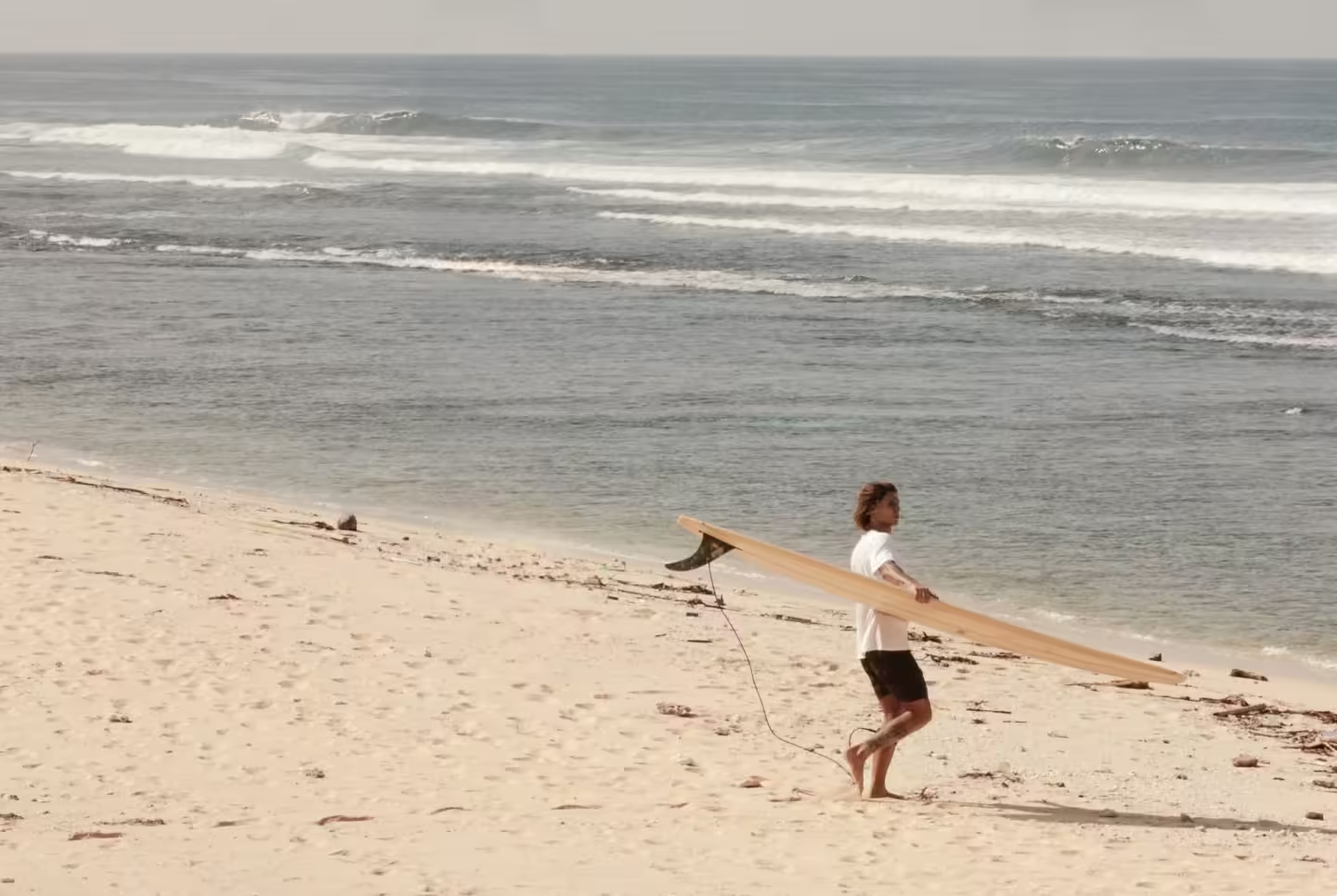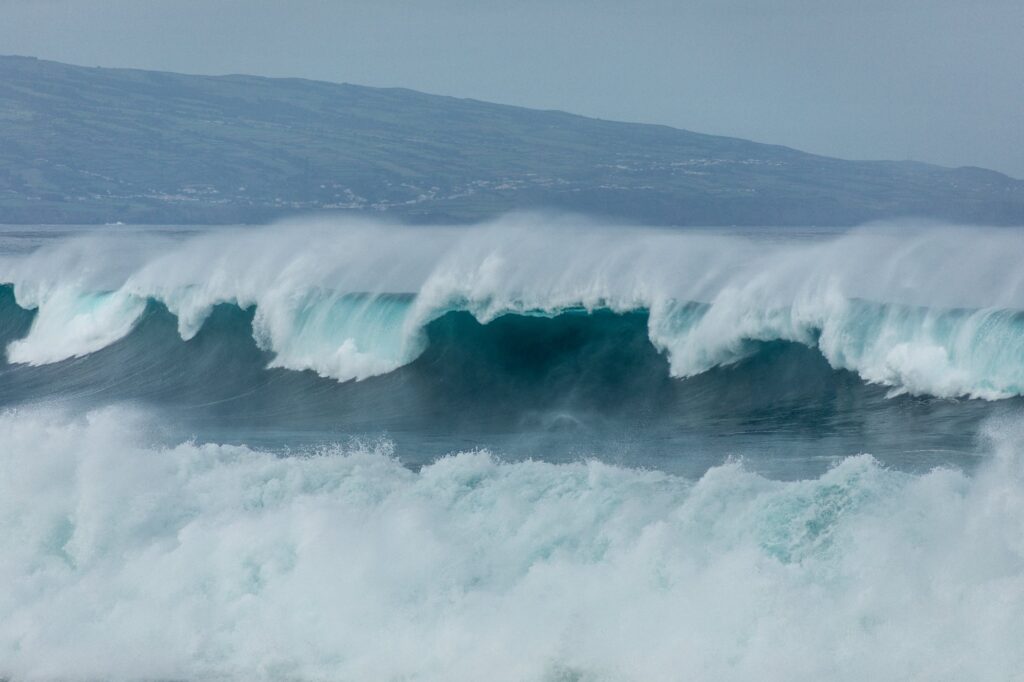What Makes Surfing Dangerous? Top 7 Dangers & How to Stay Safe
Surfing is a popular water sport that can be enjoyed by people of all ages. However, what many people don’t realize is that surfing can be quite dangerous if the proper precautions aren’t taken.
There are several things that can make surfing dangerous, including the power of the wave itself and the rocks and reefs that can be found beneath the surface.
As a rule of thumb, remember that we, as humans, are interfering with nature in some way, and nature has a strong power that can be destructive.
It’s important to be aware of these dangers and take the necessary precautions before riding the waves.
Keep reading to learn more about what makes surfing dangerous and how you can take care of yourself the next time you surf.
Grab your notepad, we’re starting!
How Dangerous Is Surfing?
As with any other sport, surfing is more dangerous for beginners. With this activity, in particular, needing good balance makes it difficult at first and beginners will likely fall frequently.
Because of this, accidents can happen. And if you’re not comfortable in the water, your surfing may be affected, posing additional risks.
However, even skilled surfers aren’t immune to injury. There are a variety of circumstances in the water that can influence your safety, no matter how talented you are at surfing or swimming.
In fact, numerous incidents have occurred in the past years that have resulted in fatalities.
Briece Taerea, Kirk Passmore and Donnie Solomon are just a few of the surfers who have died while surfing.
Even the most experienced surfers are at risk of injury due to multiple dangers inherent in the sport.
But wait! We’re not here to scare you out – all we want is peace and chill and as much as surfing might make this impression, it is important to follow the rules and be conscious every time you go out surfing.
What Are The Dangers of Surfing
One of the most dangerous things about surfing is the power of the waves themselves. Waves can range in size from a few feet to over 20 feet tall, and they can pack a powerful punch.
Big Waves And Your Best Pal
Your surfboard is your ally – it keeps you floating on the water and obviously the way to ride a wave, but can also become an enemy quickly.
No matter how experienced you are, you’re bound to fall while surfing. And when you do fall from your board, you won’t have complete control over it, especially since the waves move you and your board in the water.
The surfboard is pulled away and because of the powerful water movement – the surfer can be hit by his own surfboard in the body or head.
In order to catch big waves, you need to get inside the water (meaning deeper), as waves change with depth, making you more prone to potential risks.
If you get caught in the water, it can be difficult to make your way out, eventually leading to potential drowning.
When a wave crashes down on a surfer, it can knock them off their board and cause serious injuries.
The sheer power of the water of a large wave can easily knock a surfer off their board and drag them underwater.
When falling, try to cover your head with your hands. It could lower the risk of potential head injury resulting from your surfboard.
Rip Currents
Rip currents can also pose a serious threat to surfers. Rip currents typically occur near beaches with large waves, as the waves crash down and create a strong current of water that flows back out to the ocean.
They’re also hard to spot, and even experienced surfers can be caught in them. They often look like calm areas of the water, but can quickly sweep a surfer away.
In order to avoid being caught in a rip current, it is important to know what to look for. Be aware of any areas where the waves are breaking particularly fast or where the water is unusually calm.
If you find yourself caught in a rip current, don’t try to fight against it. Instead, paddle parallels to the shore until you escape the current.
Reefs
Another danger that surfers face is the rocks and reefs that can be found beneath the surface of the water. Rocks and reefs in the ocean are sharp and hard.
These hidden obstacles can cause serious injuries if a surfer hits them while riding a wave. In some cases, these hidden obstacles can even cause fatal injuries.
Before you go surfing, make sure you know the area and how the spot is built – try to map the surface before you get inside so you have a better idea of where you should paddle or not.
Marine Life
The ocean is home to a variety of marine life. Unfortunately, humans are increasingly disturbing this habitat, often with tragic consequences. And when human invades their territory, they can become aggressive and unpleasant.
Sharks are a well-known danger in the ocean. While shark attacks are relatively rare, they can be incredibly dangerous and often result in fatalities. You probably have already seen videos or heard of sharks in relation to surfing.
Important to note that sharks are not the only creatures that may come across surfers, but also jellyfish, sea urchins, and even stingrays.
Even dolphins, which may seem harmless and incredibly cute, can be aggressive sometimes, and while we don’t want to harm these amazing creatures, we should stay respectful of them.
Back to the sharks: around 95% of the time, they mistake surfers for their regular prey, meaning they do not willing to attack humans.
But their force is so powerful that even after they hit and immediately swim away, they already made a fatal injury.
In order to avoid being attacked by a shark, you need to try to stay in areas where there are other people.
If you’re surfing alone, watch out for warnings, locals mostly know if there are sharks around usually or not.
And also, avoid being in the water during dusk or dawn, as this is when sharks are most active. If you see a shark, I think it’s clear that you need to get out of the water as quickly as you can.
Getting Crowded
surfing is an emerging sport that gets popular, which means that there are more and more people, at the same spot trying to catch the same waves.
Surfing spots are limited and completely natural, so this amazing resource is capped – which leads to crowded spot locations.
First of all, it can be dangerous when there are too many people in the water because it increases the chances of colliding with another surfer or their board. It also just generally makes it more difficult to surf, as there are more people in the way.
Second, It increases the chances of someone getting their wave stolen. When there are a lot of people surfing, it can be harder to catch a wave.
This can be frustrating and dangerous, as it can lead to arguments and even fights in the water, which really depends on the local environment.
Therefore, it’s critical to follow the rules of surfing, be extra careful, try to be aware of the people around you, and for your own happiness, just remember that we’re in the ocean to enjoy the waves – so try to relax, have fun and preserve the aloha vibes.
Your 2nd Best Pal
The leash is important for surfing because it keeps the surfer attached to the surfboard. This is important because it helps the surfer get back on the board when needed and safely ride a wave. Without a leash, a surfer could easily lose their board and be stranded in the ocean.
However, your savior can also be your adversary. As the leash is an attached cord to the surfer’s ankle and board, it can often cause injuries if it becomes wrapped around a surfer’s body while underwater mostly.
While it has fast-release mechanisms, you could still be trapped in the corals or seaweeds if you’re unconscious.
It helps to make sure the leash is facing the right direction (pointing to the opposite of your leg and body).
Water Pollution
Water pollution is a huge issue that affects marine life negatively, but also us the surfers. Toxic runoff from factories and farms, chemical spills, and garbage all end up in our oceans and can cause serious damage.
The trash in the water might cause difficulties for surfers and result in accidents. It could also negatively affect beginners’ experience.
Furthermore, the water is increasingly dangerous because of ocean issues such as chemical spills. Not only could this potentially cause itchiness, but it could also lead to skin damage.
Try to avoid surfing in polluted areas as it’s not healthy for your body, even if the waves are awesome.
Conclusion
Because of the dangers inherent in surfing waves, it’s important to take the necessary precautions before heading out into the water. So how can you stay safe while surfing?
Be sure to check the forecast and only go out when the conditions are safe. Try to not surf alone, but with friends, and make sure you know the location surface – there’s a big difference between sandy, rock, and reef surfaces.
If you see a rip current, don’t freak out, but instead swim parallel to the shore until you’re out of it.
Also, don’t try to surf beyond your skill level, as it could be dangerous and cause a negative surfing experience.
Even though the ocean is a beautiful place, surfing is a magical activity, and the vibes are just awesome, it’s important to be aware of the dangers that might come with it.
By taking some simple precautions, you can enjoy your time in the water while staying safe. And most importantly – stay chilled, relaxed, and preserve the aloha vibe.



